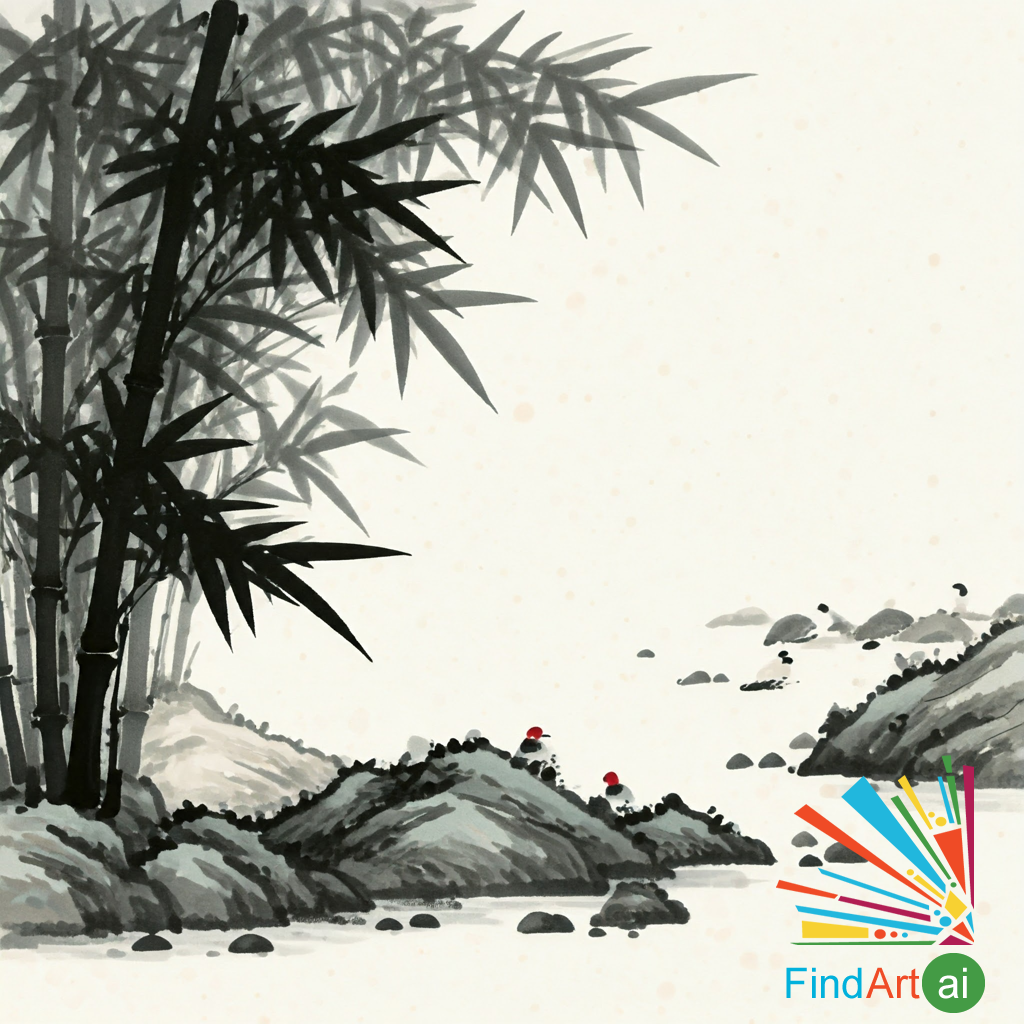Chinese Ink Painting
Chinese Ink Painting, also known as Shui Mo Hua (水墨画), is a traditional art form that emphasizes the expressive qualities of ink and brushwork. Rooted in centuries-old techniques, this style combines painting with poetry, calligraphy, and philosophy, reflecting the deep cultural and aesthetic values of Chinese civilization.
Key Characteristics of Chinese Ink Painting
- Use of Ink and Brush
- The primary medium is black ink, which varies in density and tone, applied with brushes of various sizes. The fluidity of ink allows for a range of effects, from delicate lines to bold washes.
- Emphasis on Brushwork
- Brushwork is a vital aspect of the art, with techniques that express the artist's emotions and intentions. Mastery of brush techniques, such as "feibai" (flying white) and "cun" (texture strokes), is essential.
- The strokes can convey different textures, such as the softness of fur or the ruggedness of rocks.
- Integration of Poetry and Calligraphy
- Many ink paintings incorporate poetic inscriptions or calligraphy, enhancing the artwork's meaning and aesthetic value. The interplay between visual and textual elements creates a holistic experience.
- Example: The works of artists like Wang Wei often feature landscapes with accompanying poetry.
- Themes of Nature
- Chinese ink painting predominantly focuses on natural subjects, including landscapes, flowers, birds, and animals. These themes reflect the artist's connection to nature and philosophical ideals.
- Example: The "Four Gentlemen" (plum blossom, orchid, bamboo, and chrysanthemum) symbolize various virtues in Chinese culture.
- Spontaneity and Expression
- The style emphasizes spontaneity and personal expression, allowing artists to convey their feelings and interpretations of the subject matter. This approach aligns with the philosophical underpinnings of Daoism and Zen Buddhism.
- Many artists practice "xieyi" (写意), which means "writing ideas," prioritizing emotional expression over realistic representation.
- Use of Negative Space
- Negative space is an essential element in Chinese ink painting, often used to create balance and harmony. The artist leaves areas unpainted, allowing the viewer's imagination to fill in the gaps and creating a sense of depth.
- Cultural and Historical Influences
- The style has evolved through various dynasties, influenced by cultural changes and philosophical ideas. Historical styles include the meticulous and realistic approach of the Song dynasty and the more expressive and abstract styles of later periods.
Common Themes in Chinese Ink Painting
- Harmony with Nature: The relationship between humans and nature is a central theme, reflecting the importance of balance and respect for the natural world.
- Spirituality and Philosophy: Many works embody philosophical ideas from Daoism and Buddhism, emphasizing themes of impermanence, unity, and the search for inner peace.
- Cultural Heritage: Ink paintings often convey cultural stories, historical events, and traditional values, serving as a medium for preserving and transmitting heritage.
Famous Chinese Ink Artists
- Wang Wei
- A poet and painter of the Tang dynasty, known for his landscapes that blend nature and poetry.
- Zhang Daqian
- A modern master of ink painting, celebrated for his innovative techniques and blending of traditional and contemporary styles.
- Qi Baishi
- Renowned for his expressive paintings of flowers, insects, and animals, emphasizing spontaneity and vitality.
- Xu Beihong
- Known for integrating Western techniques with traditional Chinese ink painting, particularly in his depictions of horses.
Chinese Ink Painting is a sophisticated art form that combines technique, philosophy, and cultural expression. Through the mastery of ink and brush, artists create evocative representations of nature and emotion, reflecting deep-rooted traditions and spiritual beliefs. The interplay of painting, poetry, and calligraphy enhances the richness of this art, making it a vital part of Chinese cultural heritage.
Chinese Ink Paintings with Harmony with Nature Theme
Chinese Ink Paintings with the Harmony with Nature theme are a visual representation of the deeply r...

